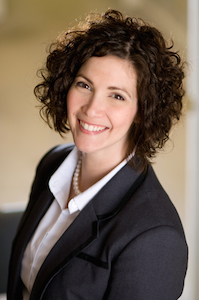The Pedagogy of Process
Applied drama for a well-rounded education
By Laurie Melnik, Executive Director, Southeast Center for Education in the Arts –

The Every Student Succeeds Act (ESSA) and its inclusion of the arts as part of the well-rounded education of every student has led to new discussions around assessments, evaluations, policy, for both students and teachers. While ESSA certainly presents challenges for arts education, the new federal education law also offers arts educators and advocates fresh opportunities to reframe discussions about their disciplines’ role as an essential part of an in-school K-12 curriculum.
This is true of drama/theatre as it is of any of the arts. To be clear, here I will reference the subject area as drama/theatre throughout this article to acknowledge the two distinctive but related threads of educational theatre. I think the most promising way to raise the value of drama/theatre is to unite our field around teaching process rather than just product. Why focus on process? Because it’s through engaging in meaningful processes (e.g., problem-based learning) that students acquire skills and knowledge beyond rote memorization and truly take ownership of their learning. It’s also where teachers become empowered to do what they are good at: designing relevant, innovative curriculum for today’s youth.
In this article I’m going to outline some specific strategies that emphasize process in drama/theatre pedagogy within our current educational landscape. Many of you likely already apply and assess process in your theatre classrooms, but perhaps not with the intentionality I’m going suggest here. It took me awhile to come to understand how I was, and was not, thinking about the process of teaching drama/theatre to my students. Today, I’m sensitive to situations when I need to reconsider my teaching pedagogy. For instance, long ago I was working with a group of students on assigned scenes, and they were struggling because they were so focused on the product of their efforts. They were more concerned about getting a good grade than about their growth through an artistic process. When I asked a student why he was so concerned about his grade rather than refining his craft as an actor, he responded, “I’m not any good unless I get an A. It’s all about getting an A.”
I realized at that moment that this student, and likely his peers, had completely skipped the process of what they were doing. I had given them in-class rehearsal time and, thinking back on this, many of them used this period to memorize their lines and set their blocking. Of course, those things were important, but there was no active exploration of their characters or risk-taking. My students didn’t go there because they weren’t taught to go there. Only active, creative engagement will nurture the life skills that theatre teaches so well. But it won’t happen unless it’s explicitly taught and assessed. That’s where process teaching and learning comes in.
Why process?
Regardless of what occurs in a drama/theatre classroom, process is happening. When students solve creative problems, from ensemble building to play creation, process is there. When students design sets, research sound, or articulate a mood through lighting, process is there. When students journey from rehearsal to opening night, process is there. However, we, as theatre educators, need to be more deliberate as we not only guide students through a creative process but also help them to understand what it means to engage in it. Articulating the processes of learning theatre helps us tell state and national decision-makers why a well-rounded education should include access to quality drama/theatre education opportunities for all students. Process is where students develop resilience, become disciplined, and acquire grit. It’s where collaboration and creative problem-solving occur, both coveted twenty-first century skills of the corporate business community.
Applied drama and process
The pedagogy of process is not a one-size-fits-all approach, nor does it exist in a vacuum. Author James Thompson, writing in Applied Theatre: Bewilderment and Beyond, de-fines applied theatre as “a participatory theatre created by people who would not usually make theatre. It is, I would hope, a practice by, with and for the excluded and marginalized.” Expanding upon this definition, Judith Ackroyd states in her book Applied Drama: Problems and Possibilities, “I have identified two features which I believe to be central to our understanding of applied theatre: an intention to generate change (of awareness, attitude, behavior, etc.), and the participation of the audience.”
Moving to an applied pedagogy can be challenging if you are accustomed to focusing on production work. However, I believe every production would be better if we, as director-educators, had a stronger understanding of process. Everyone navigates “process” in their own unique, complementary way. One approach might have more structure while the other may be a bit more dynamic. We need both. Our students deserve both.
When engaging in discussions about the pedagogy of process with other educators, I love asking, “What does it look and sound like?” I think applied drama/theatre offers a good answer to that question because it helps build communities, explore issues, and inspire change through meaningful and intentional experiences. These experiences can be a play created for a specific purpose that is then performed before an audience or they can be more informal opportunities where the work is only shared among the participants. In other words, the work doesn’t always have to be about presenting a final product in a public way. There are a variety approaches to applied drama/theatre, and it’s important to understand that what I share here does not encompass the entire field. ADT happens across a wide variety of contexts, and I highly recommend exploring and experiencing the work for yourself. When you become an active participant of applied drama/theatre, it begins to make the most sense. For me, that was through my experiences with Playback Theatre and devising original plays.
Playback Theatre
Playback Theatre is described on the website www.playback.org as “an original form of improvisational theatre in which audience or group members tell stories from their lives and watch them enacted on the spot.” Playback Theatre, developed more than thirty years ago by Jonathan Fox and Jo Salas, has hundreds of troupes throughout the world. It features a universal language used in a series of improvisational forms that each troupe employs. I used to be dismissive of Playback Theatre because, like most theatre educators, I had a lot more training in play production than process. A few years ago, I had the opportunity to join a Playback Theatre troupe though Recreate Café at the Salvation Army 614 Corps in Chattanooga, Tennessee. Directed by Recreate Café Artistic Director Tenika Dye, the troupe focuses much of its work around building bridges between the homeless and non-homeless through the power of story. Becoming a troupe member challenged me, as the Playback approach was not part of my background.
Here’s how it works: During a Playback performance, a “conductor” collects real-life stories from the audience and then cues a team of actors to “play back” their person’s story through selected short or long improvisational forms. In one performance, the audience might watch actors reenact a memory through a fluid sculpture or a chorus or see details through a longer improvisation with a clear beginning, middle, and end. No performance is ever the same because you never know what stories will be shared. Similar to Augusto Boal’s Theatre of the Oppressed, Playback Theatre strives to give a voice to those who may otherwise go unheard. Playback Theatre might seem simplistic at first glance. However, its sophistication emerges from that same deceptively straightforward approach to storytelling. Troupes tend to wear a common uniform, use cubes as set pieces, employ fabrics as props, and create mood through a music corner that ranges from a few instruments to a small band. The presentations are never a straightforward play or improv. ReCreate’s Playback performances are always well thought-out and carefully rehearsed so that every story is honored in its own unique way. As a troupe member, I have been in awe of my fellow actors’ timing and how our conductor quickly pulls out key elements of a story. We learn how to listen, collaborate, and quickly solve creative problems—all highly marketable skills in the business world.
During Playback rehearsals, members experience aspects of process most acutely. Rehearsals are absent of the pressure to perform. Rather, the emphasis is on the ensemble working together and collectively solving problems. The troupe gets to try new ideas and take risks in a way that may not occur in the presence of an audience. For example, during a Playback performance the conductor solicits stories from the audience that are played back once through a selected form (e.g., fluid sculpture, three-part narrative, tableau, etc.). During rehearsals, troupes can experience a singular story through multiple forms and then reflect upon what was effective and why. So, the active and ongoing exploration that occurs during a Playback rehearsal is where the learning happens. Once a formal audience is present that strong connection with process diminishes as the focus shifts to performance.
Playback Theatre can help drama/theatre educators bridge process and product for their students. Even just attending a troupe rehearsal gives an observer a better understanding of the work. (You can learn more about training or if there’s a troupe near you at Playbacknorthamerica.com). For example, a fluid sculpture might show young actors how to respond to each other and develop a stronger sense of timing. It could also help students take risks as they are challenged to respond to a given moment through specific choices in levels, proximity, and voice. Additionally, limiting prop choices to fabrics encourages actors to think through symbols and abstract ideas that cultivate the imagination, bringing a sense of play to the work.
Playback Theatre sometimes receives mixed reviews because of the fine line it walks between being therapeutic and being therapy. In my experience, a good Playback performance honors the stories that are shared and not stories that are forced. Playback Theatre offers many practical strategies that help activate process-centered thinking. You might already be doing something similar with tableau or choral-speak in your classroom. What I love about Playback Theatre is that it utilizes familiar drama and theatre strategies for the purpose of reenacting shared stories. That sense of freshness and the immediate response through selected forms keeps a sense of urgency and risk-taking alive in the work. It also helps us understand what investing in the moment truly means, something I think is critically important in our drama/theatre classrooms.
Devising theatre
Devising work is a somewhat different approach to applied drama and process, but it has similar goals. Devising theatre focuses on ensembles creating an original play based on the desire to understand a given situation or community issue. Monica Prendergast and Juliana Saxton describe a “collective creation” (Applied Drama: A Facilitator’s Handbook for Working in Community). Most of my own devising work, or “collective creations,” has occurred with students from a specific community (a school, cultural background, common experience, etc.) and has often begun with brainstorming ideas around a central question. For example, a few years ago I co-devised a play with an educator whose student population was more than 60 percent Hispanic. We wondered how the process of creating a play could illuminate perceptions about the Hispanic culture and combat stereotypes, especially around immigration. Our process began with asking students to respond to the following question: What do you wish people knew about you? Then students generated a series of tableaus based on themes that emerged from their responses. From there, we brought tableaus to life and improvised scenarios that then helped us discover the focus of our story-creating connections. The play was carefully crafted over time as students actively explored key moments and generated ideas. An important aspect of any devised play is that you have no idea what play will be created. Those decisions belong to the ensemble and are carefully facilitated.
Devised playmaking can be a scary process to those who are uncomfortable with the unknown and would rather begin with a scripted play. Certainly students can learn a lot in working with scripted plays, but devising work offers a level of process-based risk-taking that is often absent in traditional productions. As a teaching artist and high school educator, I have found that my students were more open to taking risks during rehearsals after they’ve gone through a devising process. There is something about working together on an unknown piece that opens up students to more possibilities. They learn how to brainstorm, negotiate ideas, and make meaningful compromises as they collaborate around a common goal. These skills can keep students from becoming passive during the rehearsal process. In other words, devising teaches them to be self-directed risk-takers.
In a devised play, rehearsals are more than learning a series of cues and blocking. Ensemble members delve into the heart of a play, discovering how best to express a character’s truth, and designing moments that captivate audiences. Focusing on the process can help refresh the purpose of rehearsal and create a safe place to take risks. Bringing devising into play rehearsals can help unpack moments and challenge actors to deeply invest in their character’s given circumstances.
A great example of how devising can reinforce process in rehearsals is through developing scenes that do not exist in the play. For instance, what would happen if Romeo received Juliet’s letter? What would happen if Nora stayed with Torvald? What would happen if the bullet missed Hamilton? Devising brings the “what ifs” that never happen in a play to life and adds a new layer of under-standing to the story. Through process, an ensemble can investigate new questions and consider new ideas in their development of a character, design of concept, or how they relate with a story that differs from their own experiences. When we invest in process, unpredictable things happen, and it is in the unpredictable where creativity and innovation occur.
I know that refocusing pedagogy on process rather than product is not an easy reset of teaching practice. It will take time and thought as to how you might use Playback Theatre or other devising strategies in your class-rooms and theatre spaces. Rather than a complete reinvention of how and what you teach, consider it this way: You’re revisiting the purpose of certain theatre activities and finding new ways to frame them for our students. It’s about challenging our students to take something that is familiar to them and experience it in a different way. When we make our classes less about completing tasks and more about experiencing, process starts to enter our teaching. In asking why, we encourage active inquiry from our students and they begin to learn invaluable life skills. And that is why theatre and the other arts are indeed essential to the well-rounded education of every student.
This article was originally published in the Summer 2016, Vol. 27, No. 4 issue of Teaching Theatre.

